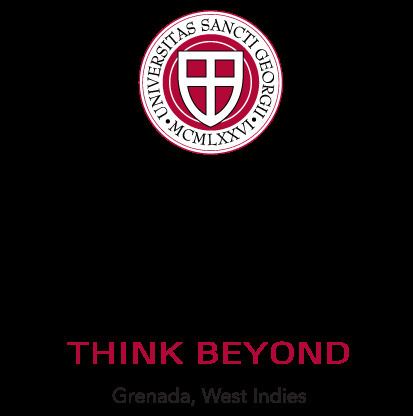Motto Think Beyond Established 1976 Academic staff 2,300+ Undergraduate tuition and fees 10,109 USD (2011) Total enrollment 6,022 (2011) | Type Private, For-profit Chancellor Charles R. Modica Students 6,300+ Phone +1 473-444-4175 Mascot Knight | |
 | ||
Address Grand Anse, The Lime, Grenada Similar American University of the Car, Ross University, Caribbean Medical University, Saba University School of, American University of Antigua Profiles | ||
St. George’s University is a private international university in Grenada, West Indies, offering degrees in medicine, veterinary medicine, public health, the health sciences, nursing, arts and sciences, and business.
Contents
- St george s university grenada 2
- History
- Campus
- University schools
- University administration
- Notable speakers
- References
St. George's University was established by an act of Grenada's parliament on July 23, 1976. Classes in the School of Medicine began January 17, 1977. In 1993, the University added graduate and undergraduate programs. In 1996, it was granted a charter for the School of Arts and Sciences and a Graduate Studies Program. In 1997, undergraduate courses in international business, life sciences, medical sciences, pre-medical and pre-veterinary medicine were added. The School of Veterinary Medicine was established in 1999, as was the University's Department of Public Health and Preventive Medicine.
St george s university grenada 2
History
St. George's University was founded on July 23, 1976, by an act of Grenada's Parliament. The name is taken from the capital city of Grenada. The original founders were Charles Modica, Louis Modica, Edward McGowan, and Patrick F. Adams. Classes at St. George’s School of Medicine began on January 17, 1977. Almost all of the founding faculty members had been educated either in the United States or Europe.
A Marxist coup forcibly overturned the Gairy government of Grenada in 1979, as the school was in its infancy with a student enrollment of 630. There were nearly 1,000 Americans on the island (including students, faculty, families, etc.). The U.S. government launched Operation Urgent Fury in 1983 as a result. Students were evacuated and classes were moved to Long Island, New York; New Jersey, and Barbados temporarily until 1984.
The reason given by the U.S. Administration of Ronald Reagan to justify the October 1983 invasion of Grenada was to rescue American medical students at St. George’s University from the danger posed to them by the violent coup that had overthrown Grenada’s Prime Minister Maurice Bishop. Bishop, a number of members of his government and several dozen civilians were killed in the coup and the island had been placed under a 24-hour curfew. During the days immediately after the coup, the only independent information coming out of Grenada was from a ham radio operated by a St. George’s student.
In his memoir, President Reagan recounted the return to the U.S. of the St. George’s students as an event that affected him deeply. "I was among many in our country whose eyes got a little misty when I watched their arrival in the United States on television and saw some of them lean down and kiss American soil the moment that they stepped off the airplanes that brought them home."
In response to Hurricane Ivan in 2004, students were again relocated temporarily to campuses in the United States. The school has a comprehensive hurricane plan in place currently.
In August 2014, SGU received a $750 million investment from Baring Private Equity Asia and Altas Partners, a Canadian private equity company whose other major investment is in a salt mining operation. In August 2015, G. Richard Olds, the founder and past dean of UC Riverside School of Medicine, was named as the school's president and CEO.
Campus
St. George's University owns 65 buildings on 42 acres of land, spread out in a peninsula in the southwest corner of Grenada located in the West Indies. A major campus expansion begun in the early 1990s resulted in 52 new buildings. The architecture of the buildings are of Georgian architecture.
University schools
St. George's University School of Medicine offers a Doctor of Medicine degree program that can be earned individually or as part of a dual degree with a Master of Public Health, Master of Business Administration, Master of Science, or Bachelor of Science. School of Veterinary Medicine students may obtain a DVM by itself or with the aforementioned degree programs. In addition, the School of Arts and Sciences offers bachelor's degree programs, and students can earn an MPH, MBA, MSc or PhD through the Graduate Studies Program.
University administration
Chancellors
Presidents
Vice Chancellors
Notable speakers
White Coat Ceremony Speakers
School of Medicine
Bourne Lecture Speakers
Keith B. Taylor Memorial/WINDREF Lecture Speakers
